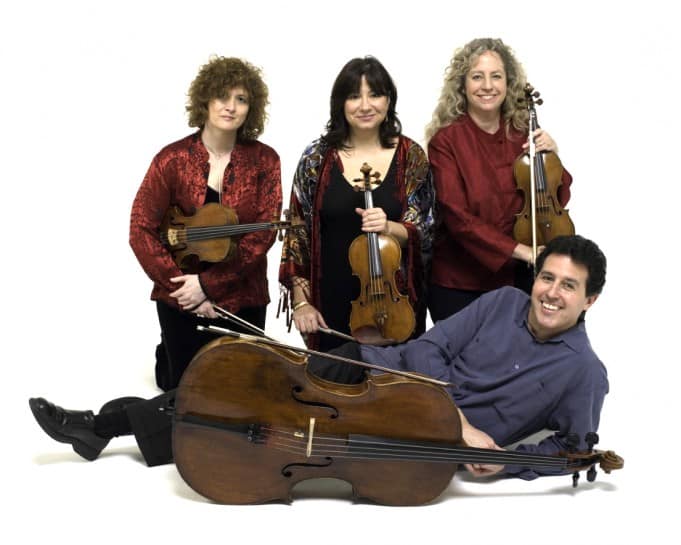 The Ives Quartet presents a program in which the group has deep roots. Haydn’s Quartet in F Sharp Minor is part of opus 50 – which the IQ has presenting sequentially in concert. Quincy Porter’s String Quartet #6 is a continuation of the Porter Quartets that they recorded on Naxos, one of which was performed in their recent concert with Gwendolyn Mok. This systematic approach to programming is an enormous benefit to their devoted fan base, all of whom have been learning more about these the works of these composers as the IQ plumbs this material.
The Ives Quartet presents a program in which the group has deep roots. Haydn’s Quartet in F Sharp Minor is part of opus 50 – which the IQ has presenting sequentially in concert. Quincy Porter’s String Quartet #6 is a continuation of the Porter Quartets that they recorded on Naxos, one of which was performed in their recent concert with Gwendolyn Mok. This systematic approach to programming is an enormous benefit to their devoted fan base, all of whom have been learning more about these the works of these composers as the IQ plumbs this material.
Friday’s concert opened with the Haydn quartet. As always, the IQ had done their advance work, researching the multiple scores that Haydn published. Violist Jodi Levitz explained that the group had identified a score that was headed with the words “in nomine domini,” in the name of the Lord. This reference begins a musical joke throughout the entire piece starting with 3 notes repeated fives times by five different notes in the first 13 measures alone, not including another six repetitions by the second violin, cello, and viola. This gets picked up again by the violin in a slightly different form toward the end of the last movement, tying this together. The joke doesn’t end here, however as notions of trinity are embedded in the work, beginning with the three sharps, the three-note gestures in the third movement, as so on.
Despite this insistent return to a three-note motif, this quartet doesn’t give itself up too easily. The Ives Quartet maximizes the depth of this piece playing it relatively slowly, allowing the listener to get lost in the luscious warmth of Mussumeli’s violin.
Written 150 years after the Haydn, the Quincy Porter quartet is startlingly different. This difference lies not just in the 150 year style difference, but in the nature of the material itself. The cello part of the F# minor quartet was relatively simple, allowing generous room for Haydn’s amateur cellist patron. The Porter quartet ore than compensated for this, as it opened with Harrison’s ostinato-like gesture, powering through with a sweeping crescendo, providing an anchor for this inherently stable first movement. The dominance of the cello returns again in the third movement, joined by Levitz on viola and Freier on violin in a pulsating accompaniment. These two movements flank the dreamy second movement that creeps along in a nebulous fog. Just when the fog begins to get tedious, the music becomes insistently faster and loud, before retreating into the ethereal fog.
The evening ended with guest violist Leslie Tomkins, and cellist Tanya Tomkins, who joined the group for the Tchaikovsky sextet. With its more predictable structure, this was a huge contrast to the quartet that preceded it. One could not help be struck however, by the difference of six instruments and four. Goethe’s observation that a string quartet is a conversation among four equals, does not extend to this particular work, which sounded more, at moments like a chamber orchestra. This was a rousing work that ended the evening with a vibrant, high energy finale.



